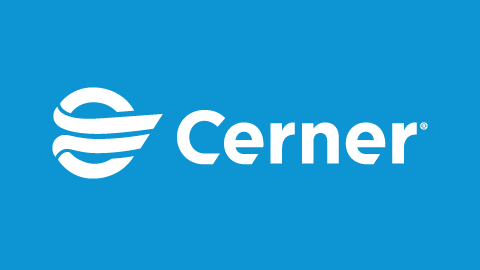Estimated read time: 6 minutes
The COVID-19 pandemic is unlike anything the health care industry has seen in our lifetime. As organizations navigate these unprecedented times, data and analytics can provide clarity and support for clinical and operational decision-making.
For example, real-world clinical data that can be shared among researchers is essential to testing and validating the therapies needed to treat COVID-19 patients. To help clinical researchers fight this pandemic, Cerner is offering eligible health systems free access to a COVID-19 data science workspace for academic projects.
These are some of the other ways Cerner is providing health care organizations with actionable insights.
1) Identifying at-risk patients
What if health care organizations could identify and engage patients at-risk for severe COVID-19 complications before they become sick? Cerner is collaborating with Lumeris on a model designed to help health care organizations identify individuals at risk for unplanned hospitalizations. The COVID-19 Hospitalization Index model – available at no cost – is incorporated into Cerner HealtheIntent® solutions. The use of the COVID-19 Hospitalization Index helps organizations prioritize outreach to people in the community, identify and address emerging medical or psychological issues and schedule follow-up telehealth appointments.
2) Preserving critical resources
Health care organizations across the globe are experiencing a shortage of personal protection equipment (PPE) supplies like N95 masks, gloves, gowns and eye protection amid the COVID-19 outbreak. There’s also a need to conserve providers’ time and energy as they work tirelessly to provide high-quality care to patients. Data and analytics are helping organizations better manage these critical resources.
Roper St. Francis Healthcare in Charleston, South Carolina is using the Cerner enterprise data warehouse, HealthEDWSM, to give its pandemic task force and care teams consolidated COVID-19 reports. The provider’s analytics and informatics team uses dashboards that leverage data from across the organization’s acute and ambulatory electronic health records (EHRs) to provide networkwide transparency to COVID-19 testing results.
Using these reports, the Roper St. Francis Healthcare Command Center can coordinate resources across hospitals, provider practices and the community. Care teams are using the same data to identify patients who test positive and remove patients from isolation who test negative, which helps conserve PPE.
To help clients implement similar strategies, COVID-19 screening and symptoms dashboards are built into the Cerner HealtheAnalyticsSM application to summarize and display trends for patients who have been screened or presented common COVID-19 symptoms.
As more clinicians get exposed to COVID-19 and are ordered to self-quarantine, hospitals and health systems need a way for their workforces to keep up with the demands of the pandemic. Cerner quickly deployed a simple staffing projection tool and made it available at no cost to health care organizations as they plan for workforce shortages ahead of patient surges. The tool focuses on staffing ratios and expected absentee rates, allowing organizations to assess how they may need to adjust their workforce plan.
3) Predicting surges
Data sources from disparate sources are necessary to help hospitals understand when a surge might hit their community. The Cerner Surge Forecasting tool provides health systems with peak use predictions and potential shortages based on reported capacity on a county-by-county level. This publicly available dashboard combines multiple public sources of COVID-19 reporting data for a more accurate prediction of surge peaks throughout the U.S.
4) Reducing the reporting burden
Mandated reporting puts a strain on health care systems during a time of overload and crisis. To ease this burden, Cerner is working with the National Healthcare Safety Network (NHSN) to serve as an information gathering and reporting hub.
Cerner, in collaboration with Tyler Technologies, established a one-stop survey tool for hospital capacity reporting. Participating health systems and hospitals can use this tool to provide one report that meets state-level requirements as well as the regulations of NHSN, the Centers for Disease Control and Prevention and the Federal Emergency Management Agency.
The data is aggregated on the health provider’s behalf and populated in a site-specific dashboard that’s powered by the Cerner Command Center Dashboard. The tool is shared with providers at no-cost during the pandemic. This streamlining of data reporting will ultimately help the government better understand existing hospital capacity to inform the potential reallocation of regional staff, patient load, ventilators and PPE.
5) Accelerating data access
Health care organizations are worried about many challenges that stem from COVID-19, such as expanding ICU capacity, rationing PPE supplies and the bottom-line impact of reductions in elective procedures. Cerner’s delivered system updates can help our customers solve some of these challenges.
Nuvance Health in Lagrangeville, New York is using Cerner Lights On Network®, an enterprise-level data analytics tool, to get a comprehensive view of incoming COVID-19 EHR updates. This information can help providers accurately and efficiently screen, treat and care for patients. For example, Nuvance implemented dynamic filtering to quickly identify all patients on a unit who have positive COVID-19 isolation orders.
“The tool's user-friendly layout with listings by solution makes it easy for us to stay updated on critical features as we try to handle the rapid demands of this pandemic."
— Melinda Heady, RN, MSN, CPHIMS director, IT acute clinical systems, Nuvance Health
Many health systems have replaced in-person visits with telehealth to facilitate COVID-19 screenings while preventing exposure risk to the broader patient population. Lights On Network ® offers analysis of Cerner Video Visit volumes and duration so health care organizations can forecast demand and gauge usage across facilities, specialties and individual providers.
6) Preparing for recovery
Leaders at CoxHealth in Springfield, Missouri are using data and analytics to create an organizational readiness score to determine the organization’s ability to reopen services for high priority procedures or appointments. The algorithm considers data such as the amount of available PPE, staffing, percentage of COVID-positive patients, admissions and medications. The health care organization also plans to continue using the tool to monitor readiness in the event of additional COVID-19 cases.
As the industry enters the recovery phase, health care providers must consider operational and care delivery preparedness, as well as how to prioritize backlogged non-essential appointments and procedures. Cerner is committed to equipping providers with the data and analytical tools they need throughout the COVID-19 pandemic fight.
Cerner provides analytics and reporting solutions designed to deliver the right information, to the right user, at the right time. Learn more here.

9e80.jpg)



